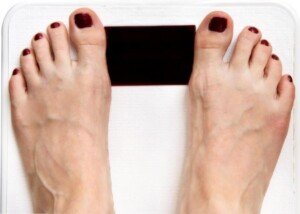Here is a guide on how to lose weight with exercise even if you can’t do aerobics or leg workouts and need a total knee replacement.
A person who needs a total knee replacement can still lose weight in time for the surgery by engaging in the right kind of strength training exercises coupled with a specific technique that optimizes fat loss.
Obese men and women are at greater risk of complications following total knee replacement surgery.
For this reason, weight loss prior to the procedure is strongly advised.
“When considering losing weight before your TKR, one must have reasonable goals and means by which to achieve these,” says Marc F. Matarazzo, MD, a board certified orthopedic surgeon with The Center for Bone & Joint Surgery of the Palm Beaches, FL.
“A weight loss of 5-10% would be a reasonable goal to start.
“In general, low impact exercises along with resistance training exercises and proper diet are recommended.”
- Examples of low impact exercise are use of a stationary bike and elliptical trainer.
- Walking with hand weights and a good arm pump is another option.
“It is also recommended to seek medical advice and assistance in losing weight, as there could be medical ramifications involved,” says Dr. Matarazzo.
For example, if you have high blood pressure or diabetes, these conditions will alter how you should approach an exercise program.
“Effective treatment for weight management and obesity related to musculoskeletal symptoms can include 30 to 60 minutes of moderate intensity exercise three times per week.”
What if lower body exercise causes knee pain?
First off, you can try walking laps in a pool. However, this would only be the beginning of a weight loss plan — as there’s a more effective way to shed the pounds that should be prioritized over any water activity.
That more effective way is strength training the upper body, since lower body work would not be wise for someone with advanced osteoarthritis of the knees.
You’ll be able to engage in this in a maximal way, provided that you’re free of shoulder problems and have no other comorbities that can warrant restrictions such as lower back pathology or chronic heart failure.
The protocol for maximal weight loss via strength training is to use a resistance load that enables you to complete at least eight repetitions — but not more than 12.
This is called an eight to 12 rep max. It’s that sweet spot for maximizing the fat burning effects of strength training.
If the weight load is light enough for more than 12 reps — and you end up doing 15 or more — this will dilute the fat burning effect, while possibly increasing the risk of tendon injury due to the prolonged repetitive nature of the set.
A Closer Look at this Sweet Spot for Weight Loss, Even if You’re New to Strength Training
1) Use heavy resistance so that eight to 12 repetitions are very challenging — so challenging that the entire set requires concentrated effort.
If you can carry on a conversation while doing sets, the weight simply is not heavy enough!
Furthermore, conversation will distract you from focusing on correct form!

Bench press. Shutterstock/ LightField Studios
2) Maintain good form throughout the set. Avoid swinging or rocking your body.
If you’re not sure about your form, then ask a personal trainer to demonstrate.

Overhead press. Shutterstock/Reshetnikov_art
3) Avoid exercises that isolate the shoulders, triceps and biceps (e.g., biceps curls, triceps kickbacks), as these will burn far less fat than will compound exercises that work several muscle groups at once.
Examples of compound exercises are any barbell press or dumbbell press, any machine where you push handles outward, and any pulling motion such as with equipment in which you have a seat and pull handles down towards your neck from above or horizontally towards your chest.

Seated row. Freepik.com yanalya
4) Avoid crunches and sit-ups. These are a waste of time and will not help you lose any weight. All they’ll do is make it easier to do crunches and sit-ups.
5) Make an objective to keep lifting heavier and heavier over the course of time so that you’re always in that zone of 8-12 rep max.
6) Perform these routines twice a week, e.g., Monday and Thursday, or Tuesday and Saturday.
Avoid dietary measures that are not sustainable in the long run. The best dietary approach to sustained weight loss is that of portion control.
- Replace juice with whole fruit.
- Replace soda with water.
- Replace processed foods with foods in more of a whole or natural form. For example, get fresh cuts of chicken and fresh broccoli rather than a frozen chicken and broccoli dinner that has sugar added to it.
- Replace white flour foods with whole grains; replace white rice with basmati or brown rice.
- Limit sweets.
- Unfollow any influencer who says it’s “fatphobic” to want to lose weight.


 Dr. Matarazzo
Dr. Matarazzo









